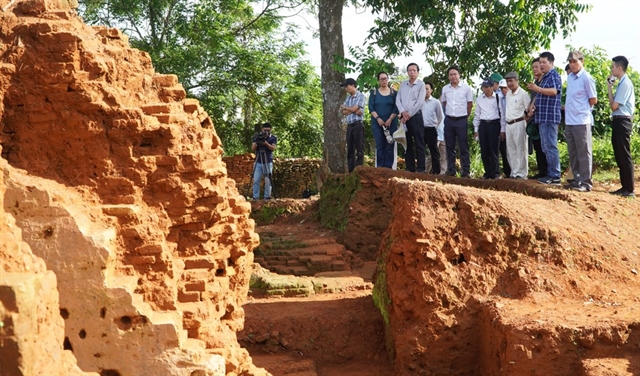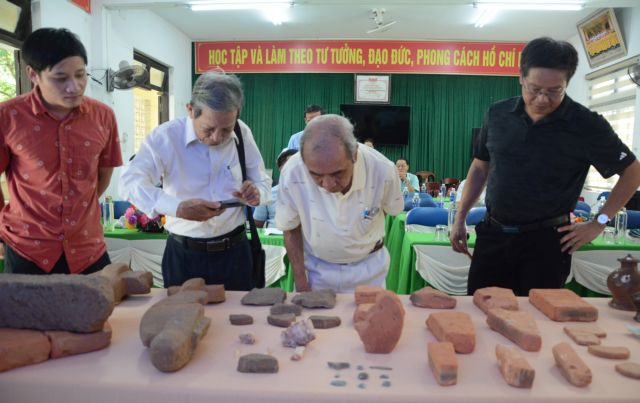The ancient twin tower, located in Liễu Cốc Thượng Village in Kim Trà Ward, features the spiritual life and culture of the ethnic people, about 1,000 years ago.

The archaeological excavation site of Liễu Cốc Twin Tower in early July 2025. Photo baovanhoa.vn
HUẾ CITY — Archaeologists and local authorities in Huế City have pledged to continue excavations on the Liễu Cốc Twin Tower – a special national heritage of the Chăm ethnic people in Huế City, according to the city's authority.
The ancient twin tower, located in Liễu Cốc Thượng Village in Kim Trà Ward, features the spiritual life and culture of the Chăm about 1,000 years ago.
After the two previous large-scaled excavations, one in 2024 and another this year, the archaeologists and Huế City People's Committee [Administration] have agreed to continue unearthing the remaining 200sq.m of the site to grasp the most comprehensive and complete basis for identifying its value.
The city People's Committee has assigned the Department of Culture, Sports and Tourism to prepare a report and submit for a permission from the Ministry of Culture, Sports and Tourism to continue exploration and excavation on the relic site in accordance with current regulations.
It also requested the city's culture authority to preside over and guide Kim Trà Ward authority to set plan for construction of a protective house for the site, including a scale and detailed financial estimation, and then report to the City People's Committee for consideration and decision.
Through previous archaeological excavations conducted by the National History Museum in coordination with the Huế City's culture authority, the excavation team confirmed that up to this now, Liễu Cốc is the only Champa relic in Việt Nam with two main worshiping towers.
Usually, the others only have one or three main worshiping towers.
The site is also a religious artistic and architectural work marking a period of historical and cultural development of the Vietnamese in general and the Chăm people in particular.
The ancient Liễu Cốc Twin Tower has unique historical, cultural, artistic and architectural values that need to be oriented in preservation, restoration and promotion.

Some of the excavated fragments of stele, glazed porcelain, terracotta and bronze metal pieces are displayed at a recent meeting about Liễu Cốc Twin Tower. VNA/VNS Photo: Văn Dũng
It was built from the 9th to the early 10th century with two main towers of which, the North Tower was built first while the South Tower was built about 10-20 years later.
Its stratigraphic structure shows that the two towers have almost no difference in height, but the South Tower was built on a larger scale by about 0.4m and shifted 0.2m more towards the East.
Decorations on the two towers' walls are different in styles. In general, archeologists found that wall pillar decorative style on the South Tower is more elaborate and perfect than the North Tower.
The team also collected more than 14,000 specimens and fragments of artefacts during the last two excavations, mainly architectural decorative materials such as stele pieces, glazed ceramics, terracotta and bronze metal fragments.

Part of the excavation of Liễu Cốc Twin Tower in Kim Trà Ward, Huế City.. VNA/VNS Photo Văn Dũng
In 1926, the Far Eastern Archaeological Institute studied and ranked the Liễu Cốc Twin Tower as an ancient relic in Việt Nam. In 1994, the culture ministry recognised the site as a National Architectural and Artistic Relic.
Although it has been seriously degraded and damaged, the temple twin tower is currently being compared to other famous Champa relics in Bắc Mỹ Sơn region in the former central province of Quảng Nam (now merged into Đà Nẵng City), and Phú Diên Tower in former Phú Vang District, Thừa Thiên Huế Province (now incorporated in Huế City). VNS